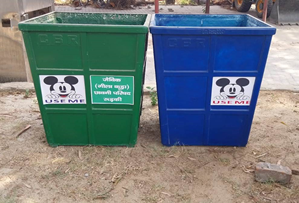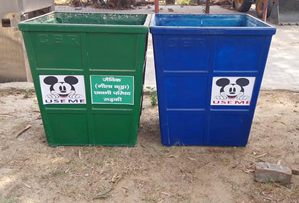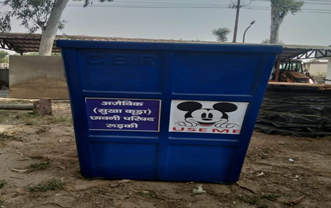CB Roorkee: Fiber Reinforced Plastic (FRP) Dustbins In Modern Waste Management

FIBER REINFORCED PLASTIC (FRP) DUSTBINS IN MODERN WASTE MANAGEMENT
Our Board implemented the FRP dustbin in Cantonment areas. FRP dustbins offer a host of advantages over traditional waste receptacles, making them an excellent choice for modernizing waste management infrastructure. Here are some key advantages that I would like to emphasize:
Impact Assessment :-
Durability and Longevity: FRP dustbins are renowned for their durability and resilience. Unlike conventional metal or plastic bins, FRP dustbins are resistant to corrosion, rust, and degradation from harsh weather conditions. This durability ensures a longer lifespan for the bins, reducing maintenance costs and the need for frequent replacements.
Lightweight and Maneuverability: Despite their sturdy construction, FRP dustbins are lightweight and easy to handle. This characteristic is particularly beneficial for sanitation workers, as it facilitates efficient waste collection and transportation, leading to increased productivity and cost savings.
Customizability: FRP dustbins can be customized to meet the specific requirements and aesthetic preferences of different communities. From varying sizes and shapes to a wide range of colors, FRP dustbins offer flexibility in design, allowing for seamless integration into diverse urban and rural landscapes.
Resistance to Odors and Stains: FRP is inherently resistant to odors and stains, ensuring that the bins remain clean and hygienic even after prolonged use. This property contributes to a healthier environment and enhances the overall quality of life for residents.
Environmental Sustainability: FRP is a recyclable material, aligning with our state’s commitment to environmental stewardship. By incorporating FRP dustbins into our waste management systems, we can reduce our ecological footprint, minimize waste sent to landfills, and promote a circular economy.
Cost-Effectiveness: While the initial investment in FRP dustbins may be higher than that of conventional bins, their long-term cost-effectiveness cannot be overstated. With minimal maintenance requirements and extended lifespan, FRP dustbins offer significant savings over their operational lifetime, making them a sound investment for municipalities and local governments.





